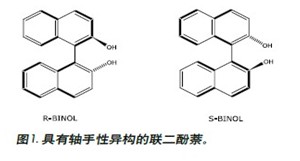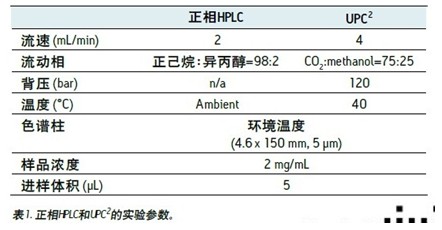Purpose <br>The effect of separating the diphenol enantiomers by normal phase HPLC and UPC 2 TM methods using the Waters® ACQUITY UPC 2 TM system.
Background <br> Organisms are composed of chiral biomolecules such as proteins, nucleic acids and polysaccharides; therefore, they exhibit different biological responses to enantiomers in drugs, foods, pesticides and waste compounds. Therefore, it is particularly important to isolate chiral compounds, especially those having pharmaceutical significance. Its importance is manifested in the increasing number of chiral drugs approved in the form of single enantiomers. To comply with FDA's strict directives for the development of stereoisomeric drugs, the pharmaceutical industry has strengthened the preparation of chiral pure compounds prior to pharmacokinetics, drug metabolism, physiology, and toxicological evaluation.
In the past 10 years, supercritical fluid chromatography (SFC) has shown great promise as an isolated stereoisomer, including enantiomers and diastereomers. Compared to conventional chiral high performance liquid chromatography (HPLC, mainly normal phase HPLC), supercritical fluid chromatography (SFC) is on average 3-10 times faster. Supercritical fluid chromatography uses inexpensive CO 2 and polar modifiers (such as MeOH) as the mobile phase to reduce organic solvent consumption and handling, making analysis more efficient and environmentally friendly. Ultra-high performance convergent chromatography (UPC 2 ) enables faster separation of biphenol naphthalene (9 times that of normal phase HPLC) compared to normal phase HPLC, and the cost per analysis is greatly reduced.
Solution <br>Diphenol naphthalene is an axial chiral organic, as shown in Figure 1. The dicyanophthalene samples were separated by normal phase HPLC and ACQUITY UPC 2 system. The main parameters of the two methods are shown in Table 1.


Figure 2 shows the separation of chiral diphenol naphthalene profiles using normal phase HPLC (A) and UPC 2 (B). Compared to the peak time of the second peak in normal phase HPLC for 18 min, the peak time of UPC 2 was 2 min, and the UPC2 speed was increased to 9 times that of normal phase HPLC. The resolution of normal phase HPLC (USP) was 1.73, while UPC 2 was 2.61. This situation also shows that the use of UPC 2 can greatly reduce the cost of each analysis. The UPC 2 method eluted the compound using 2 mL of methanol, but normal phase HPLC required 35.28 mL of n-hexane and 0.72 mL of methanol. The amount of organic solvent meter solvents, normal phase HPLC analysis of about $ 2.85 each, using UPC 2, each analysis requires only $ 0.08.

The peak shape in the UPC 2 map is better than the peak shape symmetry obtained using normal phase HPLC chromatography. The tailing factor (USP) of normal phase HPLC was 1.33 and 2.18, respectively; while the tailing factor of UPC 2 was 1.03, 1.03, respectively. The peaks in the UPC 2 map are higher and narrower than the normal phase HPLC peaks, meaning higher sensitivity and peak capacity. In UPC 2 , the high diffusivity and low viscosity inherent in supercritical CO 2 have a huge impact on separation due to the use of supercritical CO 2 as the mobile phase. High diffusivity reduces chromatographic peak diffusion caused by mass transfer between the mobile phase and the stationary phase. Low viscosity allows for optimum high flow rates without significant pressure drop. Moreover, the greatly reduced system size of the ACQUITY UPC 2 minimizes band broadening outside the column.
to sum up
The ACQUITY UPC 2 system demonstrates the successful separation of the dicyanophthalene enantiomers in 2 min using UPC 2 . Compared to normal phase HPLC, UPC 2 is 8 times faster and has higher chromatographic peaks and better symmetry. The greatly reduced system size of the ACQUITY UPC 2 minimizes band broadening outside the column. Improvements in speed and the use of relatively inexpensive methanol instead of n-hexane can greatly reduce the cost of each analysis ($2.85 per normal HPLC/$0.08 per analysis versus UPC 2 ). Waters ACQUITY UPC 2 is ideal for routine separation of enantiomers in laboratories.
Electrical Surgical Table,Mechanical Operating Table,Neurosurgical Operating Table,Mechanical Surgical Table
NINGBO TECHART MEDICAL EQUIPMENT CO.,LTD , https://www.techartmed.com